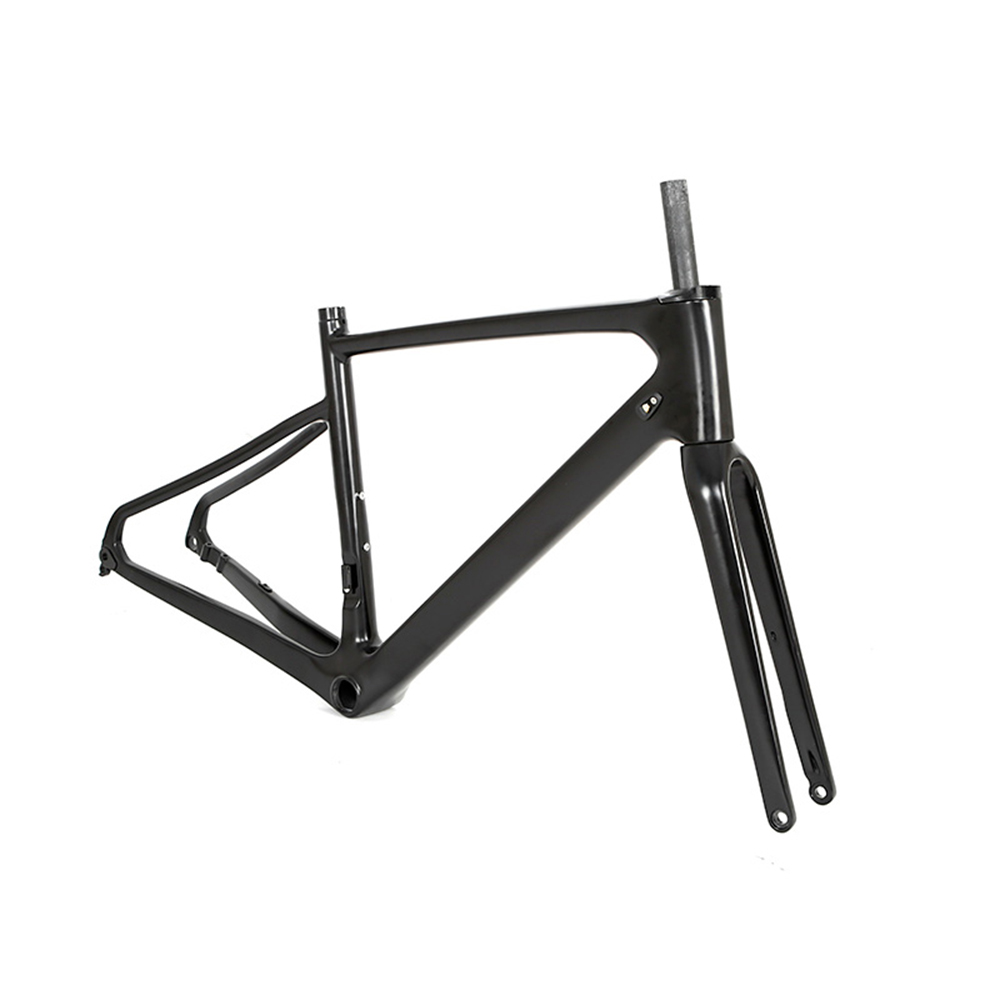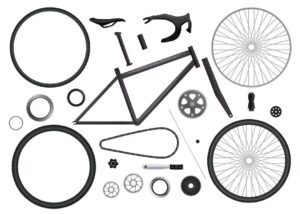Chiedersi quali dimensioni del telaio per bici per l'altezza è fondamentale per un'esperienza di guida piacevole. La dimensione del telaio della bici giusta è più di una semplice questione di comfort: è essenziale per la sicurezza, prestazione, e godimento generale della tua esperienza in bicicletta. Un telaio per bici di dimensioni adeguate garantisce un'estensione della gamba corretta, Reach comoda al manubrio, e caratteristiche di manipolazione ottimali. In questa guida completa, Amprocheremo le complessità del dimensionamento del telaio della bici, Fornendoti una chiara comprensione di come scegliere la soluzione perfetta per la tua altezza e lo stile di guida.

Dimensione del telaio della bici spiegata

Le dimensioni del telaio della bici vanno in genere da extra piccoli a extra grandi, con misurazioni basate su vari fattori come la lunghezza del tubo del sedile, Lunghezza del tubo superiore, e altezza di fondo. Comprendere queste misurazioni è la chiave per trovare la dimensione giusta per il tuo corpo.
Quanti pollici è una grande cornice per bici?
Le grandi cornici per biciclette in genere vanno da 19 A 21 pollici, A seconda del produttore e del modello specifico. Tuttavia, È essenziale notare che le dimensioni dei frame possono variare tra i marchi, Quindi è fondamentale consultare la tabella di dimensionamento del produttore per misurazioni accurate.
Quanti pollici è una cornice per bici media?
I telai di bici medi generalmente vanno da 17 A 19 di dimensioni pollici. Ancora, Queste misurazioni possono variare leggermente a seconda del marchio e del modello della bici.
Quanti pollici è una piccola cornice per bici?
Piccoli telai per bici in genere vanno da 15 A 17 pollici, rendendoli adatti ai ciclisti con insambili più brevi o coloro che preferiscono un telaio più compatto.
Di che taglia la bici ho bisogno per la mia altezza? Grafico spiegato
La dimensione del telaio della bici giusta non riguarda solo il comfort; Si tratta di ottimizzare le tue prestazioni e garantire una corsa fluida ogni volta che fai la strada o il sentiero. Perciò, La maggior parte dei produttori di telai per biciclette fornisce grafici di dimensionamento che correlano la dimensione del telaio con l'altezza del pilota, rendendo più facile trovare la vestibilità perfetta. Ecco un grafico sull'altezza del pilota e sulla dimensione del telaio della bici suggerita in base alla ricerca di mercato.
| Altezza del pilota (piedi/pollici) | Dimensione del telaio della bici consigliato (pollici) |
| 4'10” – 5'2″ | 13″ – 15″ |
| 5'3″ – 5'6″ | 15″ – 17″ |
| 5'7″ – 5'10” | 17″ – 19″ |
| 5'11” – 6'2″ | 19″ – 21″ |
| 6'3″ e sopra | 21″ e sopra |
Di che taglia il telaio ho bisogno se sono in mezzo alle taglie?
Quando ti ritrovi in quella difficile zone di dimensioni della cornice della bici, Free no! Ci sono alcune strategie da considerare.
In primo luogo, Metti alla prova il tuo “portata”. Portata, la lunghezza che la bici si sente quando sei in posizione di guida, Dipende dalla lunghezza della parte superiore del corpo, aka la tua lunghezza del bagagliaio. Optare per le dimensioni più grandi se la lunghezza del bagagliaio è più lunga della media. Al contrario, Se è più breve, Scegli le dimensioni più piccole. Questo approccio personalizzato assicura che la tua bici ti senta un'estensione, non un puzzle da risolvere.
Poi, Pensa al tuo stile di guida e alle preferenze. Se ti appoggi verso l'agilità e la manovrabilità, Il dimensionamento potrebbe essere la strada da percorrere. In alternativa, Se stabilità e comfort sono le tue priorità principali, Il dimensionamento potrebbe essere la risposta.
Sperimenta le regolazioni della sella e del manubrio per perfezionare la tua vestibilità, E non esitare a chiedere consigli agli esperti di bici per una guida personalizzata.
Come vengono misurate la dimensione del telaio della bici?
Le dimensioni del telaio della bici sono in genere misurate dal centro della staffa inferiore nella parte superiore del tubo del sedile. Questa misurazione, Conosciuto come la lunghezza del tubo del sedile, è l'indicatore principale della dimensione del telaio.
Per misurarlo accuratamente, Avrai bisogno di un nastro di misurazione. Inizia dal centro della staffa inferiore - il componente cilindrico che collega la manovella e estende il nastro verticalmente alla parte superiore del tubo del sedile, dove il posto di sedile entra nel telaio. Questa misurazione, di solito espresso in pollici o centimetri, determina la dimensione del telaio e ti aiuta a trovare la soluzione perfetta per le tue esigenze di guida.
Come ottenere la giusta dimensione della bici?
Quando si tratta di quale dimensione del telaio della bici è giusta per il cliente, Implica più che guardare le misurazioni. La dimensione perfetta per la bici richiede di considerare vari fattori, Su misura per i tuoi clienti’ esigenze. Esploriamo come fare la scelta giusta:
Considera la dimensione del telaio
Fare riferimento a grafici di dimensionamento o consultare gli esperti per abbinare i tuoi clienti’ Altezza alla dimensione del telaio appropriata. Ad esempio, I ciclisti più esperti potrebbero optare per una cornice più grande, Sfruttarsi su una maggiore stabilità durante le discese ad alta velocità. Tuttavia, Un nuovo pilota può trovare un telaio più grande travolgente, impatto sul loro controllo e fiducia sulla bici. Per soddisfare le diverse esigenze di vari clienti, TP-140009, una cornice di bici in carbonio premium progettata da SPLENDERE PRESTO, si vanta 3 opzioni di dimensioni del telaio, tra cui 15″, 17″, e 19″. Se i tuoi clienti sono principianti o veterani, Questa cornice ha coperto molto.
Considera la geometria del frame
La geometria del frame influenza significativamente il modo in cui una bici si sente e si comporta. Prova a cavalcare diversi modelli consentono ai tuoi clienti di sperimentare in prima persona come la geometria del telaio si allinea con il tuo corpo e lo stile di equitazione. Per esempio, Un telaio più grande con un passo più lungo e una cabina di pilotaggio più spaziosa offre una sensazione stabile adatta a posizioni di guida aggressive. D'altra parte, Una cornice più piccola può fornire una maneggevolezza agile e una postura di equitazione più rilassata, Ideale per ciclisti casuali.
Considera il livello di abilità
I tuoi clienti’ Il livello di abilità è anche cruciale per selezionare la giusta dimensione della bici. I ciclisti qualificati possono gravitare verso cornici più grandi, beneficiando di una maggiore stabilità ad alta velocità. Tuttavia, I ciclisti meno esperti potrebbero trovare cornici più grandi difficili da manovrare e controllare, portando a disagio e potenziali problemi di sicurezza.
Considera lo stile di guida
Adatti alla dimensione della tua bici per abbinare il tuo stile di guida preferito. Una cornice più grande con ampia autorizzazione e stabilità può essere l'ideale se ti piace affrontare percorsi tecnici con manovre aggressive. Al contrario, Se preferisci navigare lungo percorsi piacevoli con esplosioni occasionali, Un telaio più piccolo che offre una manipolazione reattiva potrebbe essere più adatto.
Considera le dimensioni della ruota
Mentre la maggior parte delle bici presenta dimensioni delle ruote standard, Alcuni marchi possono equipaggiare i telai più piccoli con ruote proporzionalmente più piccole. Le ruote più grandi da 29 "offrono un ottimo momento e stabilità rotolanti per la maggior parte degli adulti. Tuttavia, I ciclisti più piccoli possono trovarli ingombranti, optare per dimensioni delle ruote più piccole per un controllo e agilità migliorati.
Conclusione
Le basi di quali dimensioni del telaio per bici per l'altezza sono le basi per cavalcare con fiducia. Comprendendo come abbinare la tua altezza alla dimensione del telaio appropriata, e considerando fattori come la dimensione del telaio e la geometria, stile di guida, e livello di abilità, Puoi aiutare i tuoi clienti a garantire una vestibilità perfetta. Prenditi il tempo per esplorare le opzioni, Consultare gli esperti, e dare la priorità al comfort e alle prestazioni sulla strada o sul sentiero.

















